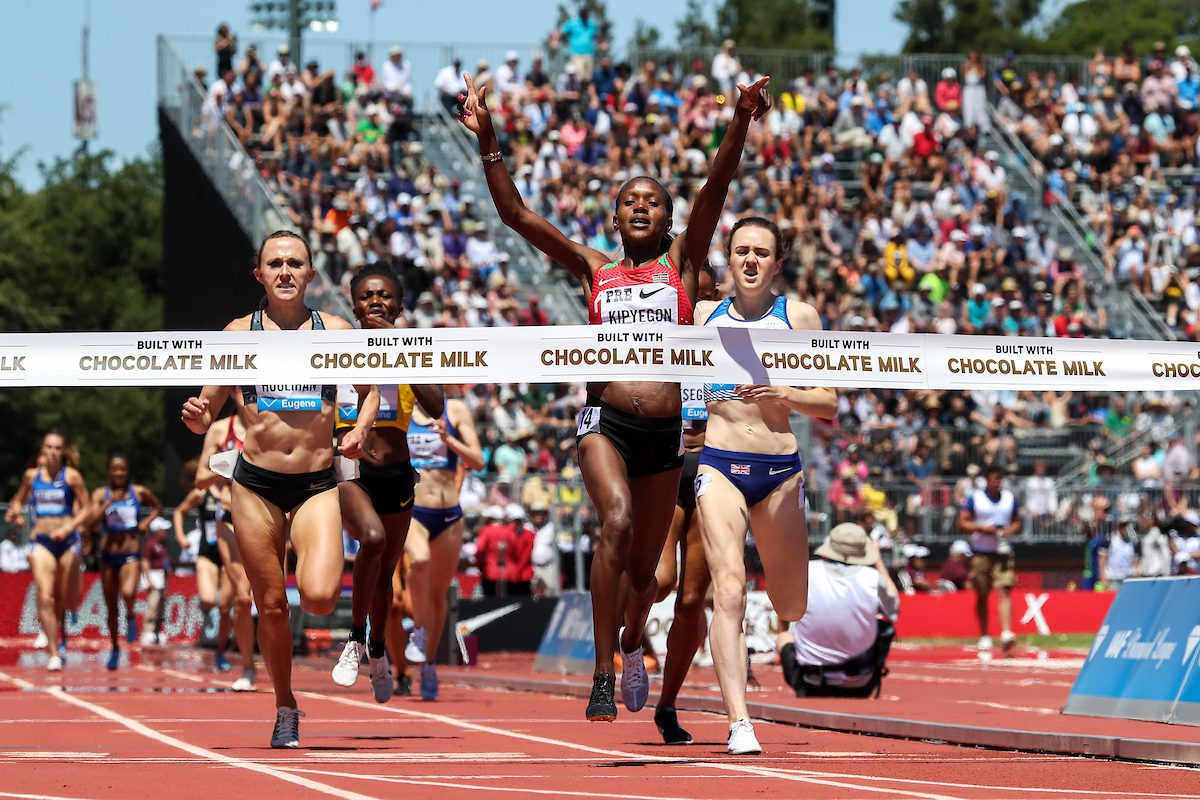Broadcaster’s comments about female pacer’s body draw criticism
The running community isn't happy with the way Tuesday's Ostrava 1,500m was called

The Ostrava Golden Spike Meet ran on Tuesday and saw some strong results. However, what was most memorable about this particular track meet wasn’t the running, it was the commentating. As Citius Mag and Sports Illustrated writer Chris Chavez pointed out on Twitter, the announcing of the women’s 1,500m was poor, as the commentary was about the physique of the pacers and not about the race itself.
It played out like this: Zdeňka Seidlová is a Czech sprinter who specializes in the 400m, but was a pacer for the women’s 1,500m. She came to the front of the field to take her spot and it was pointed out by the announcer that she was wearing pink, and she was obviously not a member of the race because of her build. “You can actually tell, just by looking at the way that they’re built, that they’re [laughs], the pacemakers. Much more muscle mass on our two pacemakers.”
RELATED: Mary Cain started the conversation we needed to have
When will announcers learn that comments like this contribute nothing to the sport and are meaningless…just inappropriate pic.twitter.com/vzszO2WSQM
— Chris Chavez (@ChrisChavez) September 8, 2020
There’s been a strong reaction to this comment from the running community, as this isn’t the first time that a runner’s body and physical appearance has been talked about ahead of their performance. And while everyone is entitled to a mistake, there’s a conversation to be had about the relevance of discussing someone’s physicality when calling a race. Does it ever need to be mentioned? Rarely.
Mary Cain has received more ridicule about her body than any runner should have to endure. This started at a young age when she joined the now-defunct Nike Oregon Project and was coached by Alberto Salazar. There she described being pushed to take birth control pills and diuretics to lose weight, regular weigh-ins and verbal abuse from some of her teammates. Cain’s success on the track came at a huge price: she didn’t have her period for three years, which weakened her bone health so much that she endured five stress fractures in five different bones.
https://www.instagram.com/p/CE7JRzgJ_Yx/
RELATED: How food guilt can lead to a stress fracture
She spoke up about the commentary that took place on Tuesday in an Instagram post, writing, “Announcers’ and reporters’ jobs are to help viewers follow along and get expert-level insight into the sport. With that in mind, why should any announcer ever feel comfortable passing judgements about how someone looks? If an athlete has publicly talked about a part of their appearance – like why they dye their hair a fun colour, paint their nails before each race, have actively been working on increasing their upper body’s muscle mass – then it’s ok to quote the player. If it’s not a fun-fact coming directly from the athlete, don’t talk about it.”
A young girl somewhere has heard this and thought “small=fast, & that’s the only way. Anything else else is clearly laughable”
The comment could have been an informative bit about the pacemakers’ other accolades. Instead, we have comments on these women’s bodies & a chuckle.? https://t.co/Yh0q5czqJ2
— Jazmin Sawyers (@JazminSawyers) September 8, 2020
Jazmin Sawyers, a British long jumper, tweeted, “A young girl somewhere has heard this and thought ‘small equals fast and that’s the only way. Anything else else is clearly laughable.’ The comment could have been an informative bit about the pacemakers’ other accolades. Instead, we have comments on these women’s bodies and a chuckle.”
In a year when the athletics community pointed out some blind spots and is working to move away from discussions of weight and its relationship to performance, we hope that those calling the races can do the same.
For the record, Faith Kipyegon won the women’s race in a season’s best of 3:59 – that woman is on fire right now.
RELATED: Get heavier, run faster


